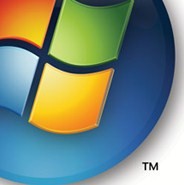Platform wars

An article in Techworld ran last week that quoted a Gardner Gartner study which said Widows Vista will be the last operating system of its kind. Gardner believes that in its place, an operating system the relies on virtualization will appear. To quote the article:
Virtualisation is best known as a way of running multiple server instances on a single hardware platform, but it can also be used to run individual operating system functions or applications. The technique isolates the various components from one another, making them easier to manage. Gartner believes Microsoft will use virtualisation to divide the Windows client into a "service partition", controlling system functions such as management and security, and one or more application partitions. Such a path is already being followed in the x86 server world, Gartner said.
I don't know a lot about the technical aspects of virtualization, but I can understand the merits of being able to update and maintain parts of the operating system independently without interfering with other parts. It seems to me, the operating system is going to become a platform, which is exactly what the web has become. This begets the question, who will succeed in an increasingly platform-based world.
The main reason proprietary platforms will take off is because they offer an unparalleled experience and widespread distributionAs I see it, there are three major platforms for delivering applications. The standards-based web platform, the Microsoft platform and the Adobe platform. I realize that both the Microsoft platform and the Adobe platform run on top of, and in some cases right along side, the standards-based web, but I think it is important to make the distinction between the three as Rich Internet Applications begin to pop up both for consumers and in the enterprise.
The standards-based web platform
The major internet players have all adopted the standards-based web platform. In fact just today, Google announced the first iteration of their office suite, all powered with Ajax on top of the standards-based web (Alex Iskold has a good article on client apps using the web platform over at Read/Write Web as well). Yahoo, with applications like Flickr and del.icio.us has made a big investment in the standards-based web. This platform has done great things for the internet. It speeds delivery of information, and because the community has helped it grow, everyone has a stake in it. But despite, that it is simply not a viable way to deliver the applications of the future. Now I want to make something very clear, there is a difference between the standards-based web platform, and the web itself. I am not talking about the death of the web. On the contrary, I think the web will continue to flourish because of its ubiquity, openness, history and the large community around it. But as companies look to port more of their applications to the internet by building Rich Internet Applications, the standards-based web platform will not be up to the task. The web makes it easy to exchange information, but it does not make it easy to build applications. Ajax can only go so far.
The Microsoft platform

The Adobe platform
Conclusion
The main reason proprietary platforms will take off is because they offer an unparalleled experience and widespread distribution. The standards based web has started to reach the limits of what it can do. Ajax is a great technology, but when it comes to building applications, it can't compete with the likes of Flash and Windows Presentation Foundation. Choosing a platform should come down to what platform provides the most functionality and the largest reach. For the longest time, that platform was the standards-based web. But increasingly, the multimedia demands and the desire for more desktop like web applications are making companies look in other directions. We are already seeing some RIA adoption in the enterprise space, and we will start to see the same thing happen to consumer-facing applications.